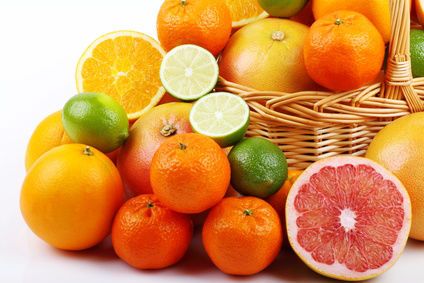
You’ve probably been told to take plenty of vitamin C during cold and flu season in an effort to ward off a case of the sniffles. And while a glass of OJ may be your go-to drink of choice, citrus juices boast a wealth of benefits far beyond mere cold protection.
Oranges, tangerines, lemons and limes may be the first fruits you think of when hearing the word citrus. But this family of fruits contain several varieties including pummelos, ugli fruits, kumquats and more, each with their own unique blend of nutrients.
Incorporating citrus fruits into your diet will boost more than just your vitamin C load, which in and of itself provides numerous benefits, such as increased collagen production, antioxidant protection and anti-inflammatory activity.
These sometimes sweet, sometimes tangy fruits also contain high levels of flavonoids, many of which are found closest to the pith. Flavonoids act as powerful antioxidants, which aid in both reducing the inflammation that leads to chronic diseases and helping to seek out and destroy cancer cells.
Research has found that certain flavonoids such as tangeretin and nobiletin are potent cancer cell inhibitors and also provide anti-invasive and anti-metastic activity.
And while many women turn to milk and other dairy products to aid in bone health, research indicates that a glass of OJ may be a better option. In a recent study researchers found that citrus juice consumption improved the bone strength of lab rats compared to those that did not consume the juice. These findings suggest that drinking these tart and tangy beverages may be an appropriate means for warding off osteoporosis in the future.
The juice aisle is practically exploding with various blends these days. Yet while some of these may be a good option when you’re on the go, juicing your own citrus is a far healthier choice. Supermarket juices can contain added sugars, sweeteners, colors and other additives.
Further, much of the nutrient concentration and antioxidant activity is reduced during the processing, packaging and shipping phases. Research indicates that vitamin C is far less stable when the juice is stored in plastic bottles and left to sit on supermarket shelves as opposed to stored fresh in glass containers.
So rather than spend money on the nutrient-poor processed variety, you can easily juice your own blends at home. Citrus fruits add flavor to vegetable juices and since a little goes a long way, you won’t break that bank when purchasing your ingredients. Try some of these recipes that incorporate the smart, sweet tang of citrus juice to reap a wealth of nutritional rewards.
Orange and Green Juice
- 1 Brussel sprout
- 1 Cucumber
- 2 Small oranges
- ¼ Pineapple
- 5 Handfuls of spinach
Process ingredients through a juicer, alternating the ingredients as you go.
Citrus and Beet Blend
- 1 Small beet
- 2 Leaves of red cabbage
- 3 Medium carrots
- ½ Lemon
- 1 Orange
- ¼ Pineapple
- 2 Handfuls of spinach
Process ingredients through a juicer, alternating between the harder vegetables and softer fruits.
 Citrus Fruit Punch
Citrus Fruit Punch
- 2 Medium apples
- 4 Kiwifruits
- ¼ Lemon
- ¼ Lime
- 2 Oranges
- 1 Pineapple
Process fruits through a juicer, stir and enjoy!
A note on juicing citrus: Non-organic citrus fruits should always be peeled first as they are likely to contain high levels of chemicals. Peel as close to the pith as possible as this is where many of the nutrients are contained.
-The Alternative Daily
Sources:
http://juicerecipes.com/recipes/fruity-punch-twist-60
http://www.ncbi.nlm.nih.gov/pubmed/19445318
http://www.sciencedirect.com/science/article/pii/S0899900705003795
http://pubs.acs.org/doi/abs/10.1021/bk-1994-0546.ch019
http://healthyeating.sfgate.com/health-benefits-citrus-fruits-7925.html

